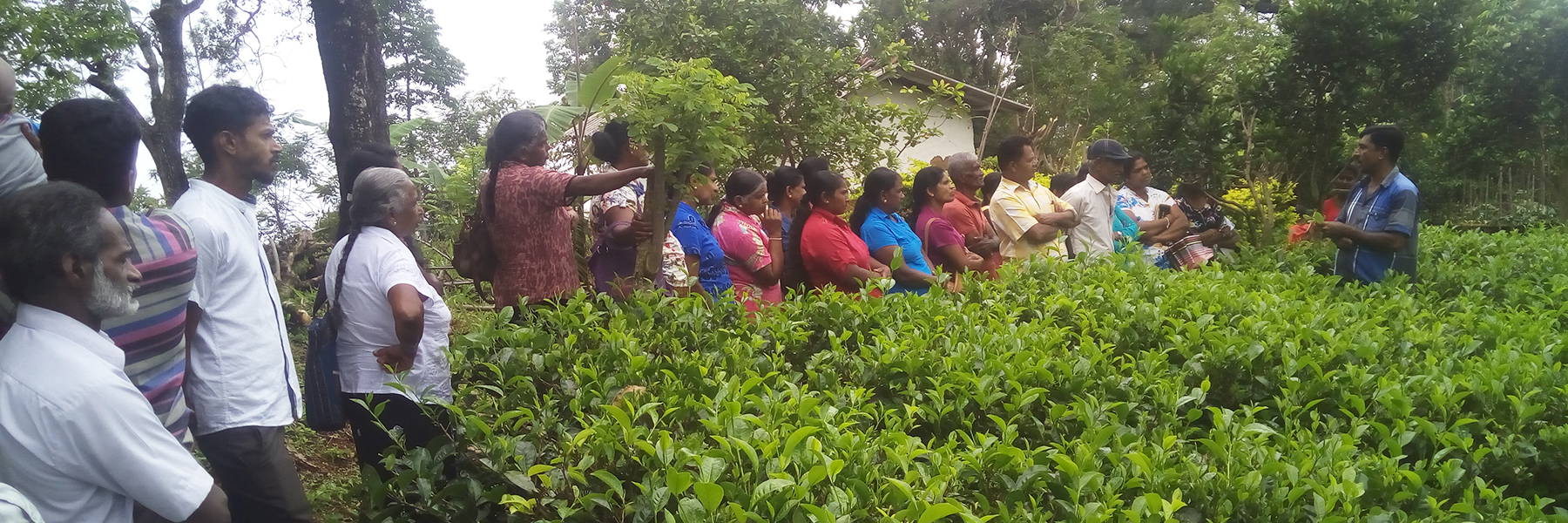This is a proposal being considered by Green Climate Fund
Focal Area:
- Increased climate resilience of vulnerable communities
- Increased resilience of ecosystem and ecosystem services
- Increased resilience of health, well-being and water and food security
Geographic coverage: Knuckles Mountain Range Catchment
Duration: 6 years
Implementing agency:
- Ministry of Mahaweli Development and Environment, Sri Lanka (MMD&E)
- World Agroforestry Centre (ICRAF), Nairobi, Kenya
- International Union for Conservation of Nature Sri Lanka Country Office
Donor/source of funding: Green Climate Fund
Budget: 47,775,000 USD ($)
| Component |
GCF funding amount |
| Climate-resilient sustainable land management (Natural Resources) |
32,000,000 |
|
Secure financing mechanisms for sustainable land management
(Sustainable Financing)
|
6,425,000 |
| Institutional Capacity Strengthened (Institutional Support) |
7,000,000 |
| PMU Management |
2,300,000 |
Brief summary of activities and relevance to SLM FAO project:
The main objectives of the project were focused on improving farm land management practices and climate proofing associated ecosystems within the project area with the aim of enhancing the ability of communities such as smallholder subsistence farmers to address climate induced shortages of irrigation and drinking water.
To achieve the above, the project activities were categorized into four components.
- Climate-resilient sustainable land management (Natural Resources): this component focuses on
- Safeguarding ecosystem goods and services generated in the knuckles catchment area.
- Increasing productivity and climate resilience of primary production in the Knuckles catchment area and its command area
- Secure financing mechanisms for sustainable land management (Sustainable
Financing): This component focuses on upgrading value chains developed with the private sector
- Establishment of a PES mechanism to support upstream catchment protection
- Institutional Capacity Strengthened (Institutional Support)
- PMU Management
This project is an extensive project with many outputs which are underpinned by numerous activities.
Component 1
Outputs focused on improving land and water management to safeguard environmental goods and services and establishing sustainable climate-resilient primary production in the catchment and control areas involved activities of relevance to the SLM FAO Project such as measures to control run-off; managing soil health and drainage and re-directing run-off so as to increase household and field water supply; controlling stream bank erosion; rehabilitating village level water infrastructure to make rainwater and stream water harvesting/collecting more efficient and developing GIS based tools to monitor (apart from other parameters) land and soil (which considers both socioeconomic and biophysical features in a participatory manner) to in-turn ascertain agricultural productivity; restoring forest mosaic landscapes using a Forest Landscape Restoration (FLR) approach which would also focus on improving livelihoods; sustainable climate resilient primary production in catchment and command areas by introducing novel/sustainable practices (eg. home gardens, annual horticultural systems) and varieties, efficient irrigation management, income generating alternative land uses (eg. tree-farming, analog forests); restoration and sustainable intensification of plantations (including spice cultivations).
Component 2
Outputs focused on upgrading green value chains and penetrating new markets using geo-referenced maps of existing value chains, biophysical and socio-economic systems, regular market analysis; enterprise and institutional development to exploit the green growth opportunities and upgrading value chains of small holder and subsistence farmers which include the developing the capacity of beneficiaries to operate farms and collective groups, introducing new technologies, developing new products and new methods related to storage, post-harvest management and transport and the introduction of novel varieties; Payment for Ecosystem Services would be designed in a participatory manner after collecting the relevant data and engaging with the multi-stakeholder platform which would be created.
Component 3
Outputs focused on governance mechanisms being designed for sustainable land management and enhancement of productivity in the catchment area complete with teams of stakeholders developing sub basin integrated land use plans using up-todate environmental and socio-economic data; develop integrated land use policy and planning mechanisms at sub-basin scale; develop a shared information system which will be used to support land use planning, climate adaptation, market information and monitoring performance of intervention options which will provide spatially specific assessments of land degradation which would be developed to provide adaptation options and target interventions and the necessary monitoring mechanisms; Develop and refine options by using a context framework for SLM and sustainable intensification; provide integrated rural advisory capacity which is responsive to developing knowledge base and real time weather and market information using multi stakeholder platforms at the sub-basin and GN scale, provide training in methods and tools required for adaptive and participatory co-design of adaptation options (using multiple training methods ranging from face to face modalities to producing printed media), developing simple to use guidelines, manuals and tools for matching options to context and implementing SLM and sustainable intensification and value chain upgrading options.
(IUCN Sri Lanka, 2018)

